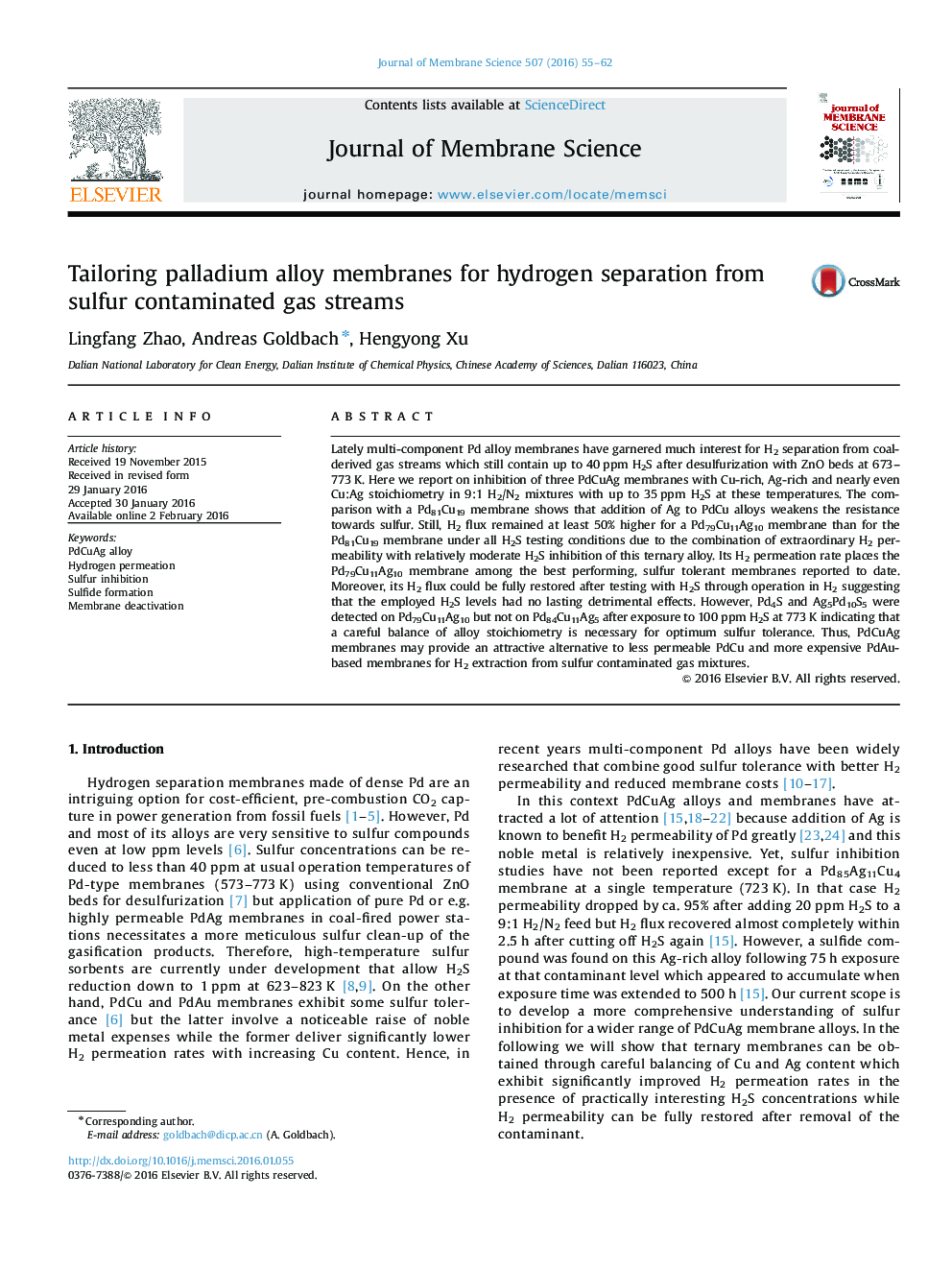| Article ID | Journal | Published Year | Pages | File Type |
|---|---|---|---|---|
| 632514 | Journal of Membrane Science | 2016 | 8 Pages |
•PdCuAg membranes with Cu-rich, Ag-rich and even Cu:Ag composition.•Separation of 9:1 H2/N2 mixtures charged with 7–35 ppm H2S.•Ag addition weakens sulfur resistance of PdCu alloys.•Pd79Cu11Ag10 membrane among best performing sulfur tolerant membranes to date.
Lately multi-component Pd alloy membranes have garnered much interest for H2 separation from coal-derived gas streams which still contain up to 40 ppm H2S after desulfurization with ZnO beds at 673–773 K. Here we report on inhibition of three PdCuAg membranes with Cu-rich, Ag-rich and nearly even Cu:Ag stoichiometry in 9:1 H2/N2 mixtures with up to 35 ppm H2S at these temperatures. The comparison with a Pd81Cu19 membrane shows that addition of Ag to PdCu alloys weakens the resistance towards sulfur. Still, H2 flux remained at least 50% higher for a Pd79Cu11Ag10 membrane than for the Pd81Cu19 membrane under all H2S testing conditions due to the combination of extraordinary H2 permeability with relatively moderate H2S inhibition of this ternary alloy. Its H2 permeation rate places the Pd79Cu11Ag10 membrane among the best performing, sulfur tolerant membranes reported to date. Moreover, its H2 flux could be fully restored after testing with H2S through operation in H2 suggesting that the employed H2S levels had no lasting detrimental effects. However, Pd4S and Ag5Pd10S5 were detected on Pd79Cu11Ag10 but not on Pd84Cu11Ag5 after exposure to 100 ppm H2S at 773 K indicating that a careful balance of alloy stoichiometry is necessary for optimum sulfur tolerance. Thus, PdCuAg membranes may provide an attractive alternative to less permeable PdCu and more expensive PdAu-based membranes for H2 extraction from sulfur contaminated gas mixtures.
